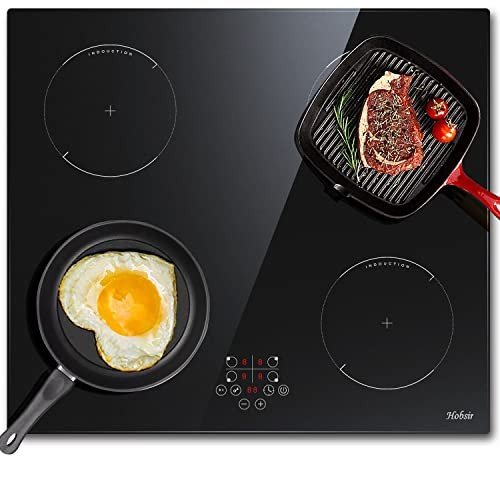The Best Way To Explain Electric Oven & Hob To Your Boss
Understanding Electric Ovens and Hobs: Your Guide to Cooking Efficiency
Electric ovens and hobs have actually transformed the cooking landscape, offering home cooks and professional chefs a dependable, efficient, and consistent way to prepare meals. As technological developments continue to affect appliance style, the efficiency and functionality of electric cooking systems have substantially enhanced. This short article looks into the functions, benefits, and factors to consider surrounding electric ovens and hobs, offering a detailed overview for anybody looking to upgrade or buy kitchen appliances.
What Are Electric Ovens and Hobs?
Electric ovens are kitchen appliances created for baking, broiling, roasting, and other cooking methods that need controlled heat. They make use of electric coils or glowing heat aspects to create and maintain the preferred temperature. Electric hobs, frequently described as electric cooktops, are flat surfaces with heating elements that allow pots and pans to be placed directly on them for cooking.
Table 1: Key Differences Between Electric Ovens and Hobs
Feature
Electric Oven
Electric Hob
Primary Function
Baking, roasting, broiling
Heating pots and pans for cooking
Heating Method
Electric coils or glowing components
Induction, radiant, or ceramic components
Operation Temperature Range
Approximately 500 ° F (260 ° C
) Varies by design; usually lower than ovens
Cooking Styles
Versatile; suitable for numerous meals
Mostly stovetop cooking approaches
Area Requirement
Typically built into kitchen cabinetry
Typically standalone or built-in alternatives
Energy Consumption
Usually higher, depending upon usage
More energy-efficient with induction hobs
Benefits of Electric Ovens and Hobs
When thinking about electric ovens and hobs, it's vital to understand their many advantages, which can improve the cooking experience.
1. Constant Heating
Electric ovens and hobs offer even and constant heating, which is essential for lots of cooking techniques. This ensures that meals cook consistently, decreasing the possibilities of overcooking or undercooking particular locations of food.
2. Security Features
Modern electric ovens and hobs come geared up with different security functions to avoid mishaps in the kitchen. For example, numerous models consist of automated shut-off functions, hot surface area signs, and kid safety locks.
3. Easy to Use
Unlike gas designs, electric ovens and hobs are uncomplicated and easy to use. The simplicity of turning on a dial or pressing a button makes them available for cooks of all ability levels.
4. Versatile Cooking Options
With different cooking methods possible, from baking to simmering, electric models are versatile sufficient to accommodate a wide variety of cooking designs and preferences.
5. Cleaning up and Maintenance
Electric ovens generally include smooth surface areas that are easy to tidy, especially models with self-cleaning abilities. Hobs, particularly induction types, likewise offer a flat surface that is simple to clean down, making maintenance a breeze.
Popular Types of Electric Ovens:
- Conventional Ovens: Ideal for traditional baking and roasting.
- Convection Ovens: Circulate hot air for faster, even cooking.
- Microwave Ovens: Use electromagnetic radiation for fast heating and cooking.
- Toaster: Small countertop ovens for quick jobs.
Popular Types of Electric Hobs:
- Induction Hobs: Utilize electromagnetic fields for quick heating and energy effectiveness.
- Glowing Hobs: Feature electric coils that warm up to cook food.
- Ceramic Hobs: Offer a smooth surface and are simple to tidy.
Considerations When Choosing Electric Ovens and Hobs
While electric ovens and hobs use various benefits, a number of elements should be taken into consideration to make sure the best fit for your kitchen:
1. Space Availability
Assess the readily available kitchen area before buying. Figure out whether you need a built-in design or a freestanding device, and measure the measurements carefully to make sure a great fit.
2. Cooking Needs
Recognize your cooking practices and preferences. If you frequently bake large amounts or cook complex meals, consider an oven with innovative functions like convection settings or several racks.
3. Energy Efficiency
Try to find energy-efficient models that can assist in saving on energy costs with time. Energy Star-rated home appliances can be especially affordable.
4. Spending plan
Set a practical spending plan that represents both the initial purchase and continuous operating costs. In Oven And Hobs For Sale to the appliance expense, consider installation and possible repairs.
5. Additional Features
Consider whether functions like wise technology, programmable settings, or steam cooking choices are very important for your cooking style.
Frequently asked question Section
Q: How do I tidy my electric oven?
A: Most electric ovens included self-cleaning options. If your design does not have this feature, permit the oven to cool, then clean down surface areas with a mix of baking soda and water or a commercial oven cleaner.
Q: Is induction cooking safe?
A: Yes, induction cooking is considered safe as the heating element just triggers when suitable pots and pans touches with it, reducing the threat of burns.
Q: How long does it consider an electric oven to preheat?
A: Preheating times vary based on the oven's design and temperature setting but usually range from 10 to 15 minutes.
Q: Can I use any pots and pans on an induction hob?
A: No, just ferromagnetic pots and pans is suitable with induction hobs. Inspect for induction compatibility before usage to avoid damage.
Q: What is the difference in between a stove and a conventional electric oven?
A: A stove consists of a fan that circulates hot air, guaranteeing even cooking and decreased cooking times compared to a traditional electric oven, which does not have this feature.
Electric ovens and hobs offer a modern option to various cooking needs, providing efficiency and dependability in the kitchen. As customers evaluate their alternatives, understanding the features, types, and considerations will allow them to make informed choices. Whether one is an occasional cook or a cooking lover, electric appliances can enhance the total cooking experience, bringing convenience and imagination to the table.
